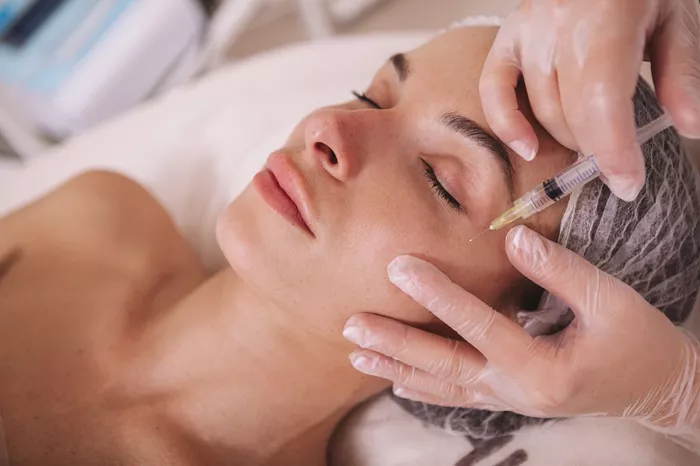The quest for a youthful appearance has led to innovative developments in cosmetic procedures. Among these, the treatment of eye bags stands out as a common concern for many individuals seeking facial rejuvenation. With the evolution of dermal fillers, addressing under-eye bags has become more accessible and effective than ever before.
In this comprehensive guide, we delve into the top 10 fillers for eye bags, offering insights into their efficacy, safety, and suitability for various individuals. From hyaluronic acid-based fillers to collagen stimulators, we explore the diverse options available to combat this common sign of aging.
1. Understanding Eye Bags
Before delving into the world of fillers, it’s essential to understand the underlying causes of eye bags. Aging, genetics, fluid retention, and lifestyle factors such as lack of sleep and excessive sun exposure all contribute to the formation of puffiness and dark circles beneath the eyes. These concerns can detract from one’s overall appearance, leading many to seek effective solutions.
2. The Rise of Injectable Fillers
Injectable fillers have revolutionized the field of cosmetic dermatology, offering a non-surgical alternative to address various facial imperfections, including eye bags. Unlike invasive procedures such as blepharoplasty, fillers provide a minimally invasive option with little to no downtime, making them increasingly popular among individuals seeking subtle yet significant improvements in their appearance.
3. Hyaluronic Acid Fillers
Hyaluronic acid fillers, such as Restylane and Juvéderm, are among the most widely used fillers for treating eye bags. These injectables work by replenishing lost volume and hydrating the delicate under-eye area, effectively reducing the appearance of hollows and shadows. With their natural-looking results and minimal risk of adverse reactions, hyaluronic acid fillers remain a preferred choice for many patients and practitioners alike.
4. Calcium Hydroxylapatite Fillers
Calcium hydroxylapatite (CaHA) fillers, such as Radiesse, offer a unique approach to addressing under-eye bags by stimulating collagen production and providing structural support. Unlike hyaluronic acid fillers, which gradually dissipate over time, CaHA fillers can last up to a year or more, making them a durable option for individuals seeking long-lasting results. However, careful injection technique is essential to avoid complications such as nodules or uneven texture.
5. Poly-L-lactic Acid Fillers
Poly-L-lactic acid (PLLA) fillers, such as Sculptra, work by stimulating the body’s natural collagen production, leading to gradual improvement in skin texture and elasticity. While not specifically designed for under-eye use, PLLA fillers can be used off-label to address hollowing and volume loss in this area. Patients must understand that multiple sessions may be required to achieve optimal results, and patience is key when undergoing this collagen-stimulating treatment.
See also: Best 5 Effective Under Eye Bags Treatments
6. Platelet-Rich Plasma (PRP) Therapy
Platelet-rich plasma (PRP) therapy involves extracting and concentrating the patient’s own blood to isolate growth factors, which are then injected into the under-eye area to stimulate tissue regeneration and improve skin quality. While PRP alone may not provide significant volumizing effects, it can be combined with other fillers to enhance their outcomes and promote healing. PRP therapy is particularly appealing to those seeking a natural, biocompatible approach to rejuvenation.
7. Fat Transfer
Fat transfer, also known as autologous fat grafting, involves harvesting fat from one area of the body, purifying it, and reinjecting it into the under-eye area to restore lost volume and improve contour irregularities. While highly effective, fat transfer requires surgical intervention and carries inherent risks such as fat necrosis and asymmetry. Additionally, the longevity of results can vary depending on factors such as the patient’s metabolism and lifestyle habits.
8. Choosing the Right Filler
Selecting the most suitable filler for addressing under-eye bags requires careful consideration of various factors, including the patient’s anatomy, aesthetic goals, skin type, and medical history. Consulting with a board-certified dermatologist or plastic surgeon who specializes in facial aesthetics is crucial to ensure personalized treatment planning and optimal outcomes. During the consultation process, the practitioner will assess the patient’s concerns, perform a thorough examination, and recommend the most appropriate filler based on their unique needs and preferences.
9. Preparing for Treatment
Before undergoing filler treatment for eye bags, patients should follow pre-procedure guidelines provided by their healthcare provider. These may include avoiding blood-thinning medications, refraining from alcohol consumption, and discontinuing certain skincare products in the days leading up to the appointment. Additionally, patients should have realistic expectations regarding the anticipated results and understand that multiple sessions may be necessary to achieve their desired outcome.
10. Post-Treatment Care
Following filler injections for eye bags, patients should adhere to post-treatment instructions provided by their healthcare provider to minimize the risk of complications and optimize results. This may include avoiding strenuous exercise, excessive sun exposure, and certain skincare ingredients for a specified period. Additionally, patients should attend follow-up appointments as recommended to monitor their progress and address any concerns that may arise.
Conclusion
The emergence of injectable fillers has transformed the landscape of cosmetic dermatology, offering safe, effective, and minimally invasive solutions for addressing under-eye bags. From hyaluronic acid-based fillers to collagen stimulators and autologous fat transfer, there are numerous options available to suit the diverse needs and preferences of patients. By consulting with a qualified healthcare provider and undergoing personalized treatment planning, individuals can achieve natural-looking results and restore a refreshed, youthful appearance to the eyes.
Related topics:
How to get rid of eye bags with fillers?
How to fix sunken eyes with fillers?
Is Upper Eyelid Filler Safe? All You Need to Know!


